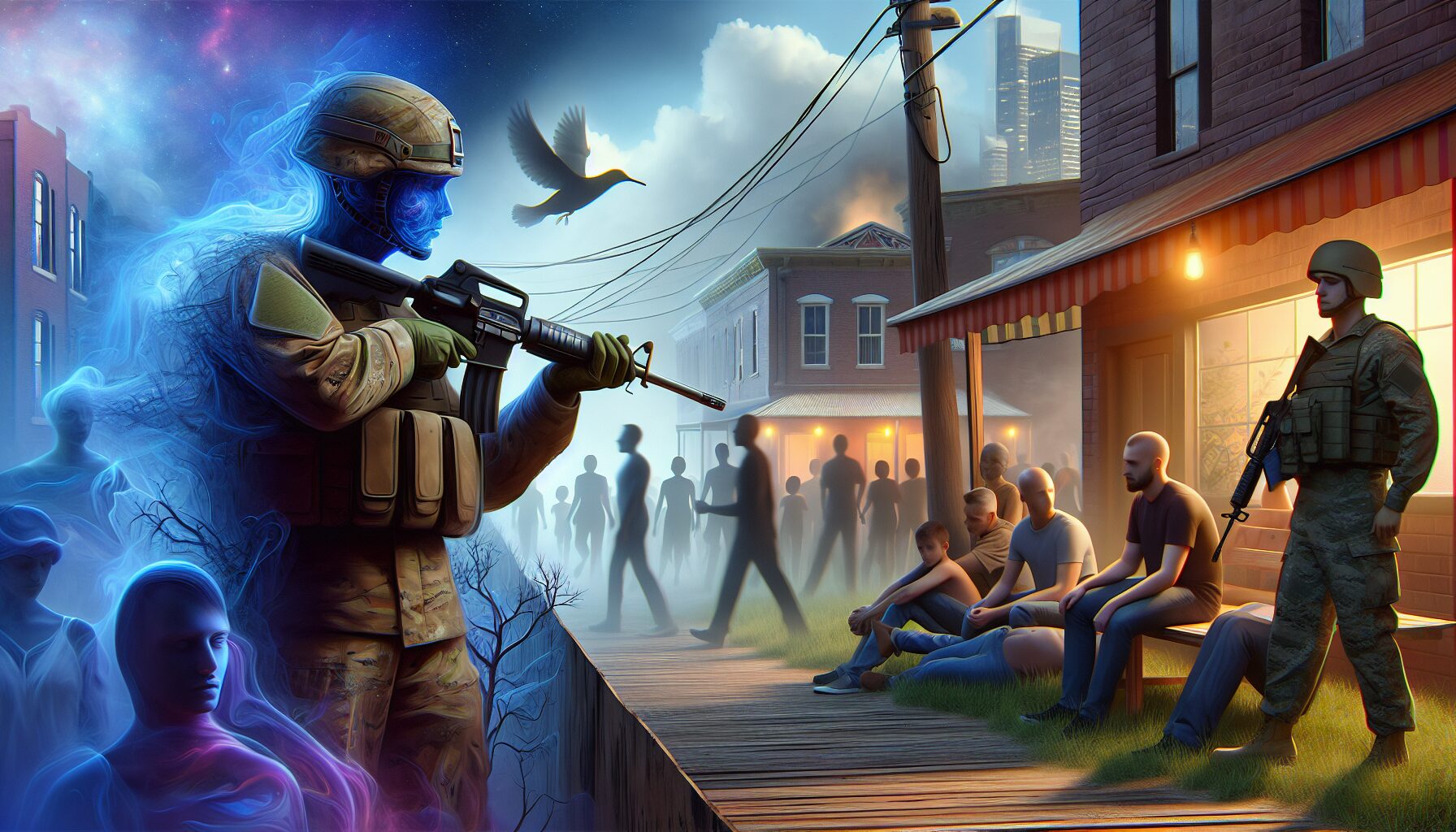The phenomenon of an individual being targeted by a community can have profound psychological impacts. These silent wars, fought not with swords but with whispers and exclusion, present a labyrinth of emotional and mental challenges. Understanding the psychology behind these events is essential for both the victims and those surrounding them, as it illuminates the complexities of human social dynamics and the sometimes destructive power of groupthink.
The Roots of Targeting
Communities, by their very nature, strive for cohesion and conformity. When an individual appears to deviate from perceived norms, whether in beliefs, behavior, or identity, they can become a target. This phenomenon is often rooted in the community’s desire to protect its integrity. As noted by social psychologist John Levi Martin, “Groups confer identity and meaning, but they demand conformity and sacrifice.”1
The Psychological Impact on the Target
Being targeted by a community does more than alienate; it can cause profound mental and emotional harm. The feeling of being ostracized can lead to heightened levels of anxiety, depression, and a fractured sense of self-worth. According to a study published in the Journal of Personality and Social Psychology, these adversities are amplified when the individual struggles to find social support or reconciliation avenues. “The salient element here is the alignment of social rejection with personal identity, which constitutes a clear existential threat,” the study indicates.2
Mechanisms of Targeting
There’s often an unwritten code that underpins community targeting, manifesting in gossip, exclusion, and passive hostility. These mechanisms operate subtly and can be difficult to document or confront. The insidious nature of these acts means that targets frequently suffer in silence, exacerbating feelings of isolation and helplessness.
“One of the cruellest ironies faced by someone targeted by their community is that their cries for help are often undermined by the very ostracism they seek to escape,” explains clinical psychologist Kathleen D. Vohs.
Community Dynamics and the Role of Bystanders
The community’s role in these silent wars cannot be overstated. The complicity of bystanders—those who witness yet do nothing—can perpetuate the cycle of harm. Social identity theory suggests that individuals within a group often prioritize in-group favoritism over justice for outsiders. This creates an environment where targeting persists unchallenged unless influential community members decide to intervene.
Addressing such issues requires a commitment to fostering inclusive environments. Encouraging open dialogue and promoting awareness of the psychological impacts of exclusionary practices are critical steps towards resolving these issues.
Coping Mechanisms for the Targeted
For those who find themselves ostracized, developing strategies to cope with adverse community dynamics can be a lifesaver. Here are several approaches:
- Seeking External Support: Engaging with communities outside the hostile environment can provide much-needed emotional support and alternative perspectives.
- Documenting Experiences: Keeping a record of incidents can help validate one’s experiences and provide tangible evidence should the need for intervention arise.
- Building Resilience: Techniques such as mindfulness, therapy, and self-reflection can fortify mental health and increase resilience against negativity.
- Fostering Empathy: Attempting to understand the motivations of those targeting can sometimes reduce feelings of hostility and promote reconciliation efforts.
The Role of Leadership in Remedying Hostility
Community leaders play an instrumental role in shaping a group’s ethos and can act as catalysts for positive change. By openly addressing instances of targeting and establishing zero-tolerance policies for exclusionary behavior, leaders can create safer, more inclusive spaces.
Leadership-oriented strategies include:
- Active Mediation: Facilitating discussions between involved parties to address grievances can prevent further escalation.
- Cultural Sensitivity Training: Programs designed to enhance understanding and appreciation for diversity will lay the groundwork for more harmonious community interactions.
- Transparent Communication: Maintaining open lines of communication helps to debunk harmful rumors and reduce misunderstandings.
Conclusion
While the invisible battles fought within communities can be some of the most damaging, understanding the psychology of these silent wars is crucial in crafting avenues towards resolution and healing. For those ensnared by the web of communal targeting, awareness, resilience, and support form the cornerstone of personal defense. Meanwhile, fostering inclusive environments and compassionate leadership can fundamentally shift the narrative from one of division and isolation to one of unity and mutual respect.
Silent wars may be fought in the shadows, but the path to peace shines in the open embrace of community healing and understanding.

Leave a Reply
You must be logged in to post a comment.